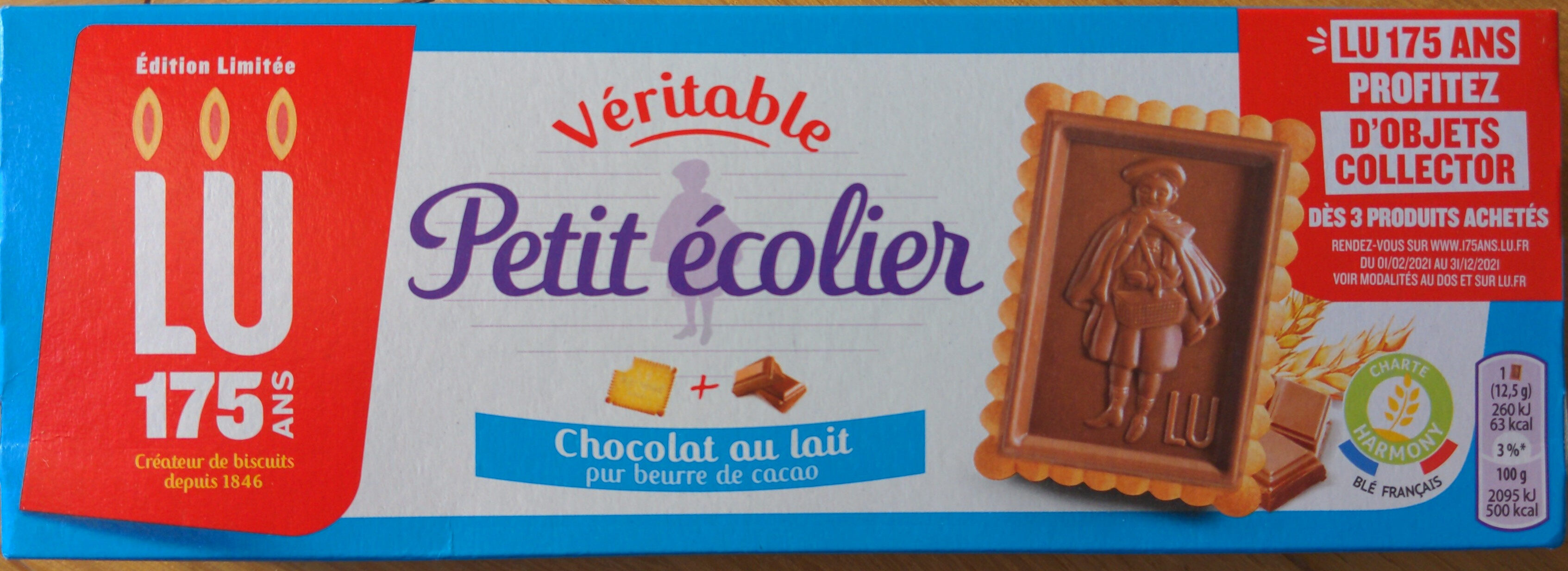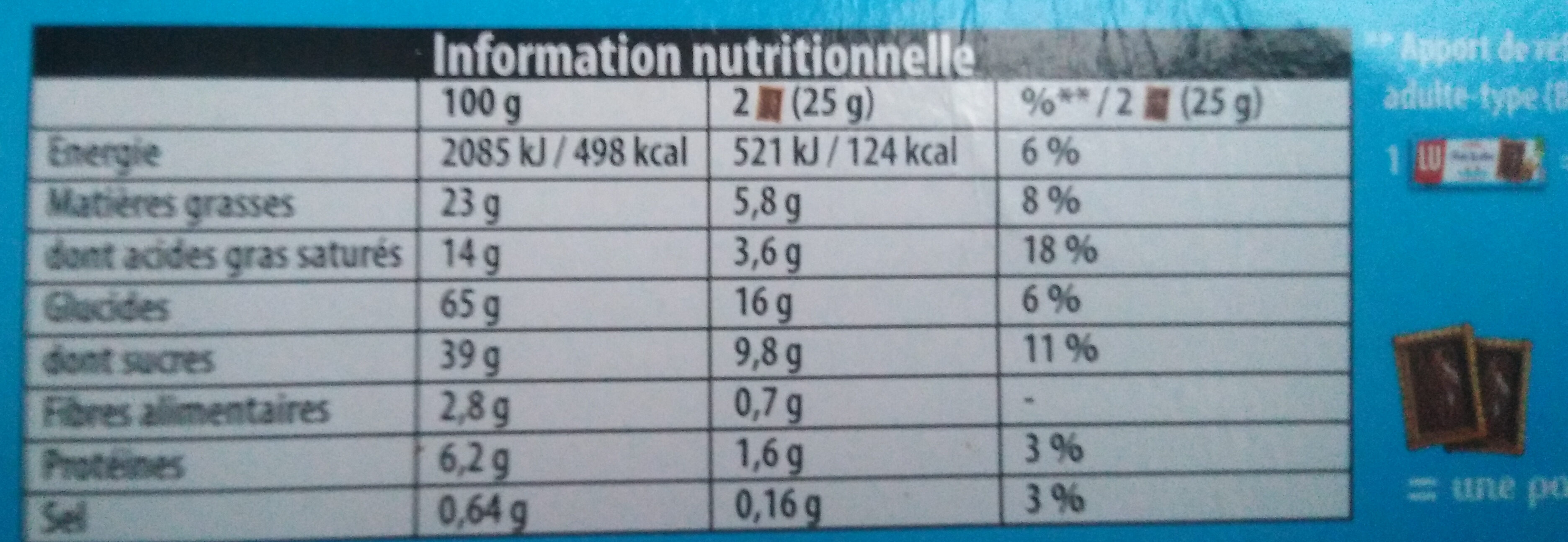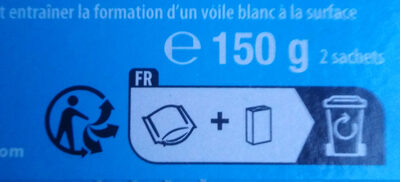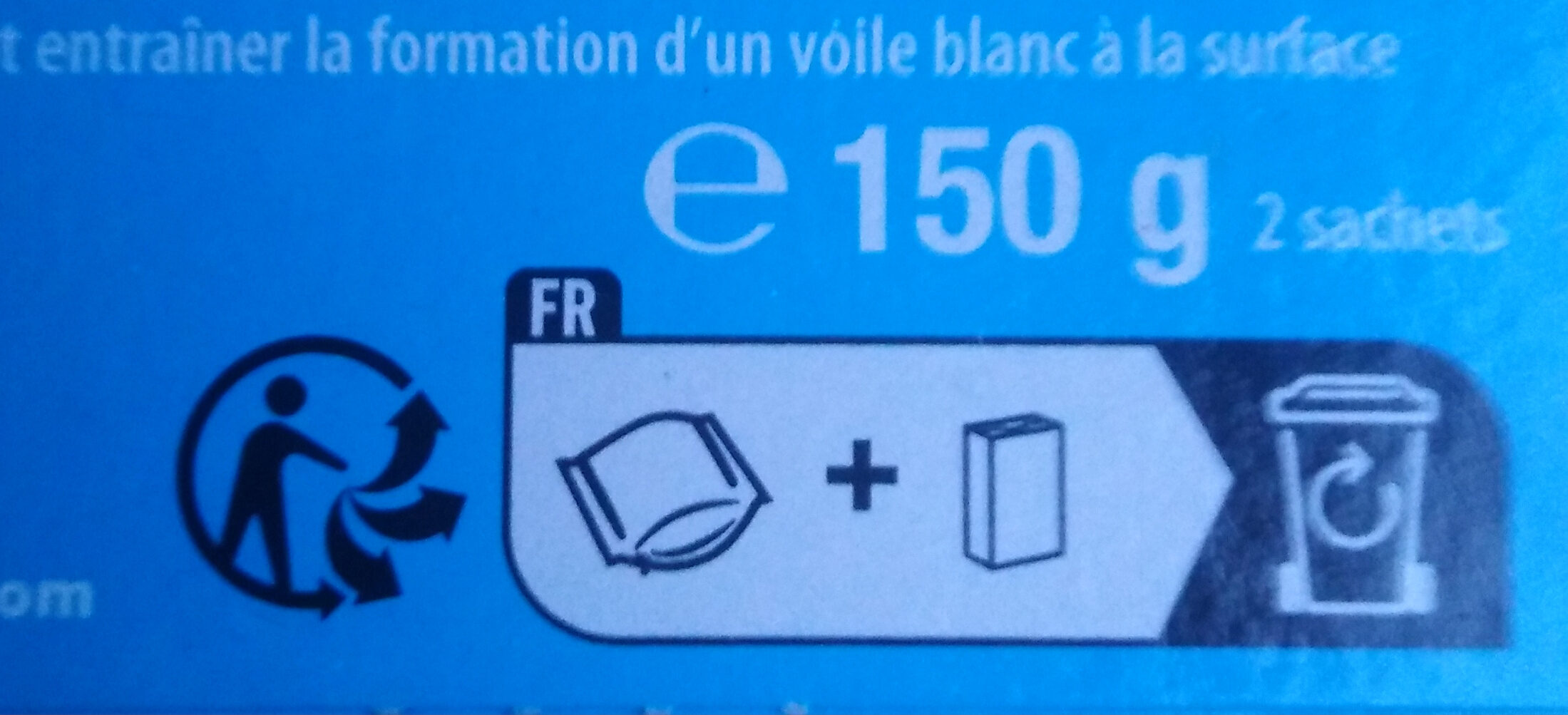Véritable Petit Écolier Chocolat au Lait - LU - 150 g (12x 12.5 g) e
Barcode: 7622210421968 (EAN / EAN-13)
Common name: Petit beurre avec tablette de chocolat au lait - Véritable Petit Écolier Chocolat au Lait
Quantity: 150 g (12x 12.5 g) e
Packaging: fr:1 boîte en Carton à recycler, fr:2 Sachets en plastique à recycler
Brands: LU, Mondelez International
Categories: Snacks, Sweet snacks, Biscuits and cakes, Biscuits, Chocolate biscuits, Milk chocolate biscuits, Petit-Beurre, Biscuit with a chocolate bar covering, Biscuit with a milk chocolate bar covering, Butter biscuit with chocolate
Labels, certifications, awards:
Distributor labels, Charte LU Harmony, Green Dot, Triman

Origin of ingredients: France, fr:Blé origine France
Manufacturing or processing places: France
Stores: Magasins U, E.Leclerc, carrefour.fr, Auchan
Countries where sold: Algeria, Belgium, France, Switzerland
Matching with your preferences
Report a problem
Data sources
Product added on by openfoodfacts-contributors
Last edit of product page on by mano78190.
Product page also edited by alexg, asmoth, autorotate-bot, bebone, beniben, bubucho, chevalstar, date-limite-app, driveoff, fabe56, fabi2, fgouget, foodless, inf, jeanbono, kiliweb, magasins-u, malisselina, mathias83dxb, migliore, moon-rabbit, mymoi, nathan17, nicolas35, off.472c87cc-d593-485f-8ec9-154453145c93, packbot, roboto-app, scanbot, segundo, smoothie-app, sophiecool62, tacite, tacite-mass-editor, tartelette299, yuka.U0lVd0VaVW1tdkJRd01RNThUYVArdGgyMzdDWkFXeW1NK2dhSVE9PQ, yuka.U3EwUE9xSXIvc0VMeDhjdXJ6Q0o2dDR0NkllSUJEMlVHdFE2SUE9PQ, yuka.V2JBcUdZRmFvNklJdVBNdnBTclI4K2wyL3NYMVVIeXhBdFlQSVE9PQ, yuka.VFBBTElaOHJoL3NEdjhJWm9VdnBwOHBXbjhHa1gzR2NFTFVESWc9PQ, yuka.VzZNTkVwUURwZUlGbnZNeDVnajgyY2hKNTZYNVEzNlpBc3NqSVE9PQ, yuka.WVp3SlFiVWhpTjh1cThRd3pFei9wdTkveUp5RFozT21kUGhOSUE9PQ, yuka.WkxFQUNJOFRvdjRta2NaaTBTdlYyK05iN01TRGJGeUhjTFpNSUE9PQ, yuka.WmFNa1Nmc3FoOTlidXZSaitoWDEzWU5Kd1ptcFJFQ3FLZFlJSVE9PQ.












